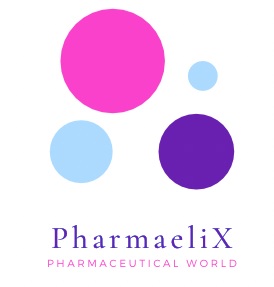Biological Oxygen Demand is a key term in the field of pharmaceuticals and other industries for water quality determination.
Table of Contents
Biological Oxygen Demand Definition
Biological Oxygen Demand (BOD) is a measure of the amount of dissolved oxygen consumed by microorganisms while decomposing organic matter in water. It is a key parameter used to assess the organic pollution level of water bodies, such as rivers, lakes, and streams.
High BOD levels in water indicate high levels of organic pollution, which can lead to oxygen depletion in aquatic ecosystems. This oxygen depletion can harm aquatic life, as many organisms require oxygen to survive. Therefore, monitoring biological indicators is crucial for assessing water quality and ensuring the health of aquatic ecosystems. Additionally, it helps in designing and implementing appropriate wastewater treatment processes to mitigate environmental impacts.
BOD principle
The principle behind Biological Oxygen Demand is rooted in the natural process of organic matter decomposition by microorganisms in aquatic environments. When organic substances, such as sewage, agricultural runoff, or industrial effluents containing organic compounds, are introduced into water bodies, they serve as a food source for bacteria and other microorganisms.
As these microorganisms metabolize the organic matter, they consume oxygen through aerobic respiration, utilizing it as an energy source to break down the organic compounds. This consumption of oxygen from the water leads to a decrease in dissolved oxygen levels. The more organic matter present, the greater the demand for oxygen by microorganisms, and thus, the higher the results.
High demand levels indicate a high concentration of organic pollutants in the water, which can result from sources like untreated sewage discharge, agricultural runoff containing fertilizers or animal waste, or industrial effluents containing organic chemicals. These high levels can lead to oxygen depletion in water bodies, harming aquatic life and disrupting ecosystems.
Therefore, monitoring the biological indicator is crucial for assessing water quality, identifying sources of pollution, and implementing appropriate measures to protect and preserve aquatic ecosystems. It serves as a key parameter in environmental management and wastewater treatment processes, helping to ensure the health and sustainability of water resources.
BOD in Pharma
In the pharmaceutical industry, Biological Oxygen Demand can be a concern primarily due to the potential pollution caused by pharmaceutical manufacturing processes and the disposal of pharmaceutical waste.
Pharmaceutical manufacturing often involves the use of various chemicals, solvents, and organic compounds, which can contribute to organic pollution when released into water bodies. These organic substances can be biodegradable, meaning they can be broken down by microorganisms, but this process consumes oxygen from the water, leading to a higher BOD.
The discharge of untreated or inadequately treated pharmaceutical wastewater into natural water bodies can significantly impact aquatic ecosystems by reducing dissolved oxygen levels. This oxygen depletion can harm fish and other aquatic organisms, disrupting the balance of the ecosystem and potentially leading to ecological damage.
To mitigate the impact of pharmaceutical manufacturing on water quality and aquatic ecosystems, regulatory bodies often set limits for wastewater discharges. Pharmaceutical companies are typically required to treat their wastewater to reduce organic pollution, including “B O D or C O D“, before it is released into the environment.
Therefore, managing limits/ levels is an important aspect of environmental stewardship in the pharmaceutical industry, and companies must implement appropriate wastewater treatment processes to minimize their environmental footprint and ensure compliance with regulations.

Determination of BOD
The determination involves a standard laboratory procedure known as the BOD test. Here’s a basic overview of the steps involved in conducting the respective test:
Sample Collection: Collect a representative water sample from the water body to be tested. Ensure that the sample is properly preserved and transported to the laboratory under suitable conditions to prevent changes in oxygen content.
Preparation of Dilutions (if necessary): If the biological oxygen demand in wastewater treatment sample is expected to be high, dilute the sample with deionized or distilled water to bring it within the measurable range of the dissolved oxygen meter.
Initial Dissolved Oxygen Measurement: Measure the dissolved oxygen (DO) content of the sample immediately after collection using a dissolved oxygen meter or Winkler titration method. This initial DO concentration is denoted as DO1.
Pre-incubation: Incubate the sample in a sealed container at a controlled temperature, typically 20°C, for a specified period, often 5 days. During this period, microorganisms present in the sample metabolize the organic matter, consuming oxygen.
Final Dissolved Oxygen Measurement: After the incubation period, measure the dissolved oxygen concentration of the sample again. This final DO concentration is denoted as DO2.

Reporting: Report the observed values in units of milligrams of oxygen per liter of sample (mg/L).
This test is typically conducted by measuring the dissolved oxygen content of a water sample initially and then after a specific incubation period, usually 5 days at 20°C (hence often referred to as BOD5). The difference between the initial dissolved oxygen concentration and the concentration after incubation gives an indication of the amount of oxygen consumed by microorganisms during the degradation of organic matter present in the water sample.
This standardized procedure ensures consistency in Biological Oxygen Demand measurements and allows for comparison between different samples and locations.
Additionally, proper quality control measures should be followed during the test to ensure accuracy and reliability of results. This includes regular calibration of equipment, use of appropriate blanks and controls, and adherence to standard operating procedures.
